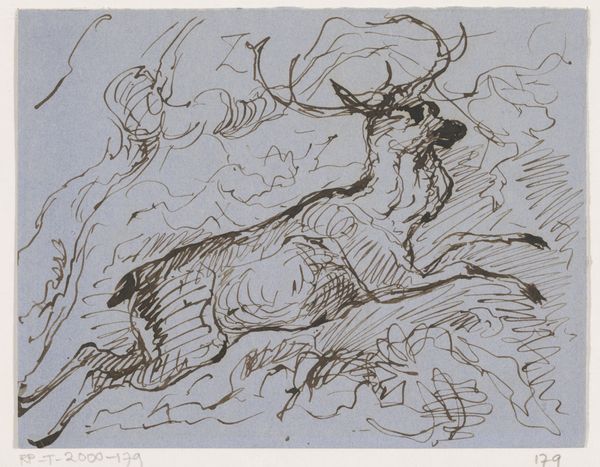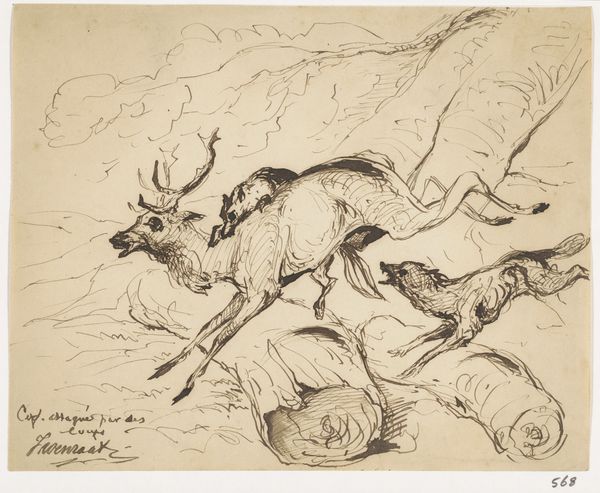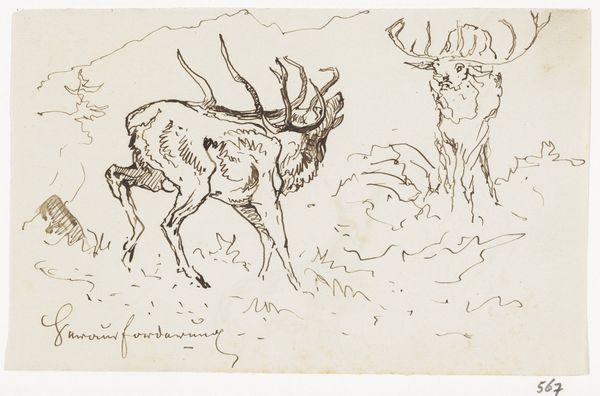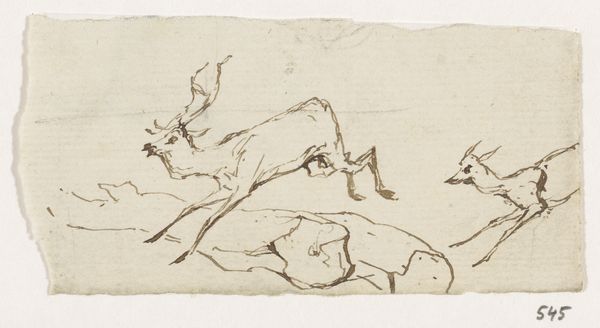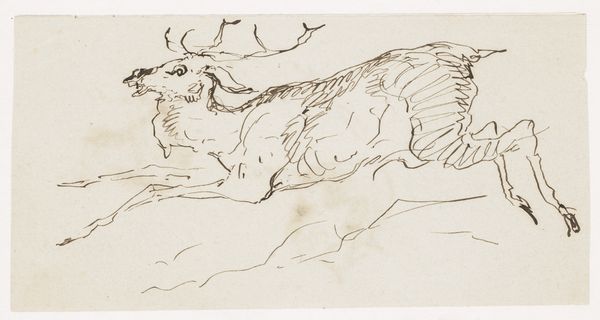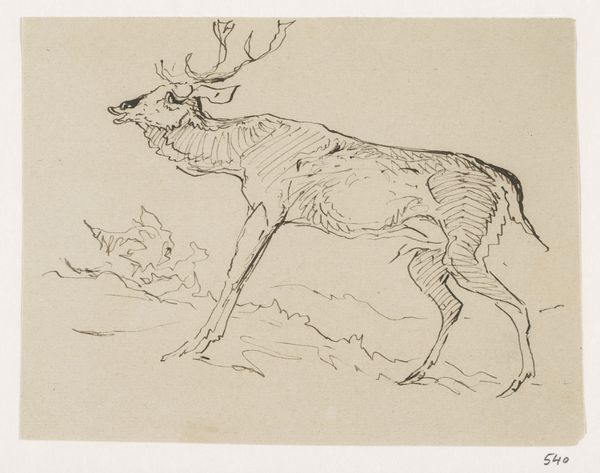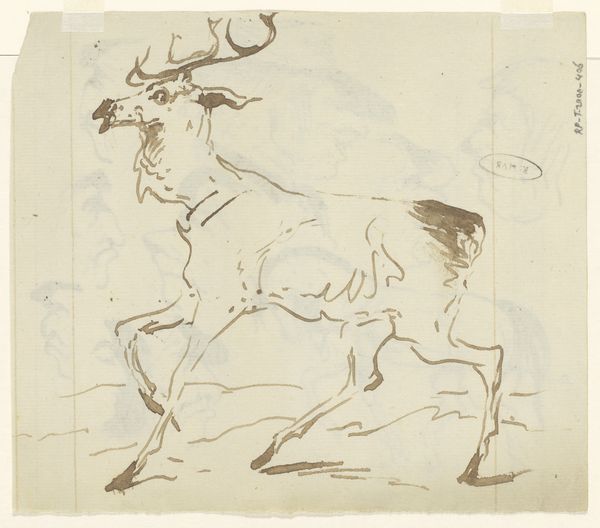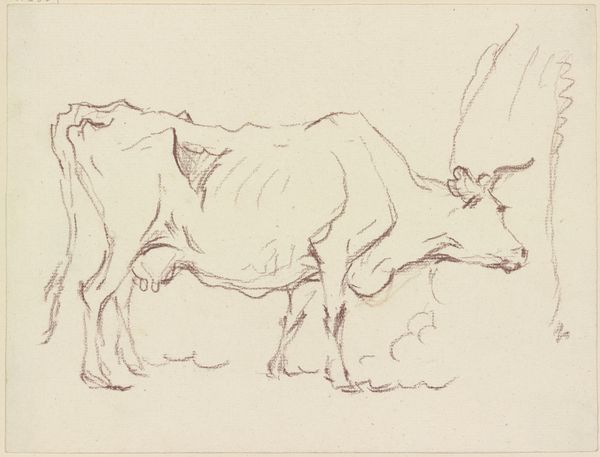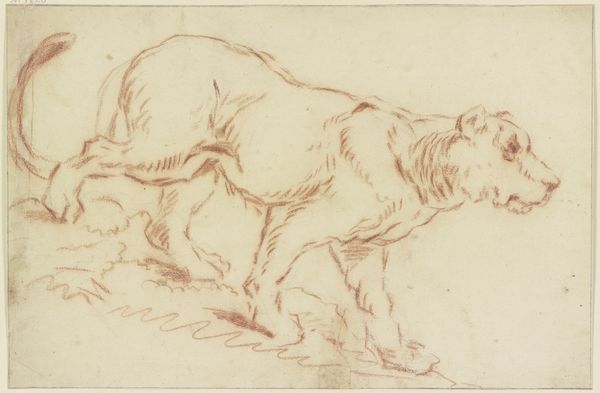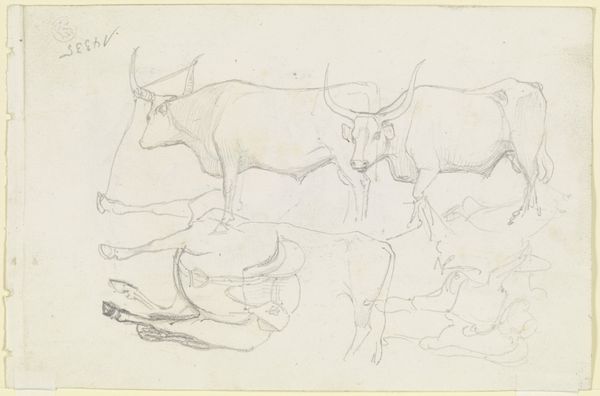
Dimensions: height 148 mm, width 217 mm
Copyright: Rijks Museum: Open Domain
Editor: This is "Deer by a Tree," a pen and ink drawing by Johannes Tavenraat, made sometime between 1840 and 1880. The lines are so delicate, it gives the deer a fragile, almost ephemeral quality. What do you see in this piece? Curator: I see more than just a deer and a tree. Think about the 19th century – a time of rapid industrialization and urbanization. Artists often turned to nature to express anxieties about these societal shifts. This drawing, with its delicate lines and focus on the natural world, might be a commentary on that era. The deer, in its vulnerability, could symbolize the fragility of the natural world in the face of human progress. Editor: That's an interesting point. I hadn't considered the context of industrialization. Does the specific way the deer is drawn play into that at all? It almost seems like the tree is supporting the deer somehow. Curator: Exactly! Consider the Romanticism movement prevalent at the time, an art movement which placed emphasis on emotion and nature. This piece subtly challenges anthropocentric views, reminding us that humans and animals exist in conjunction. We depend on nature; the tree could symbolize resilience or resistance. It encourages viewers to question the exploitation of natural resources in service of so-called "progress." Where do we find such sentiments echoed today? Editor: So, seeing the drawing not just as a simple nature scene, but also as a subtle protest against environmental destruction in a specific historical moment... that gives the piece so much more depth. Curator: Indeed! Art invites these intersectional interpretations. By situating art within socio-historical frameworks, we can encourage necessary dialogues about agency, responsibility, and our connection to the world we co-inhabit.
Comments
No comments
Be the first to comment and join the conversation on the ultimate creative platform.

